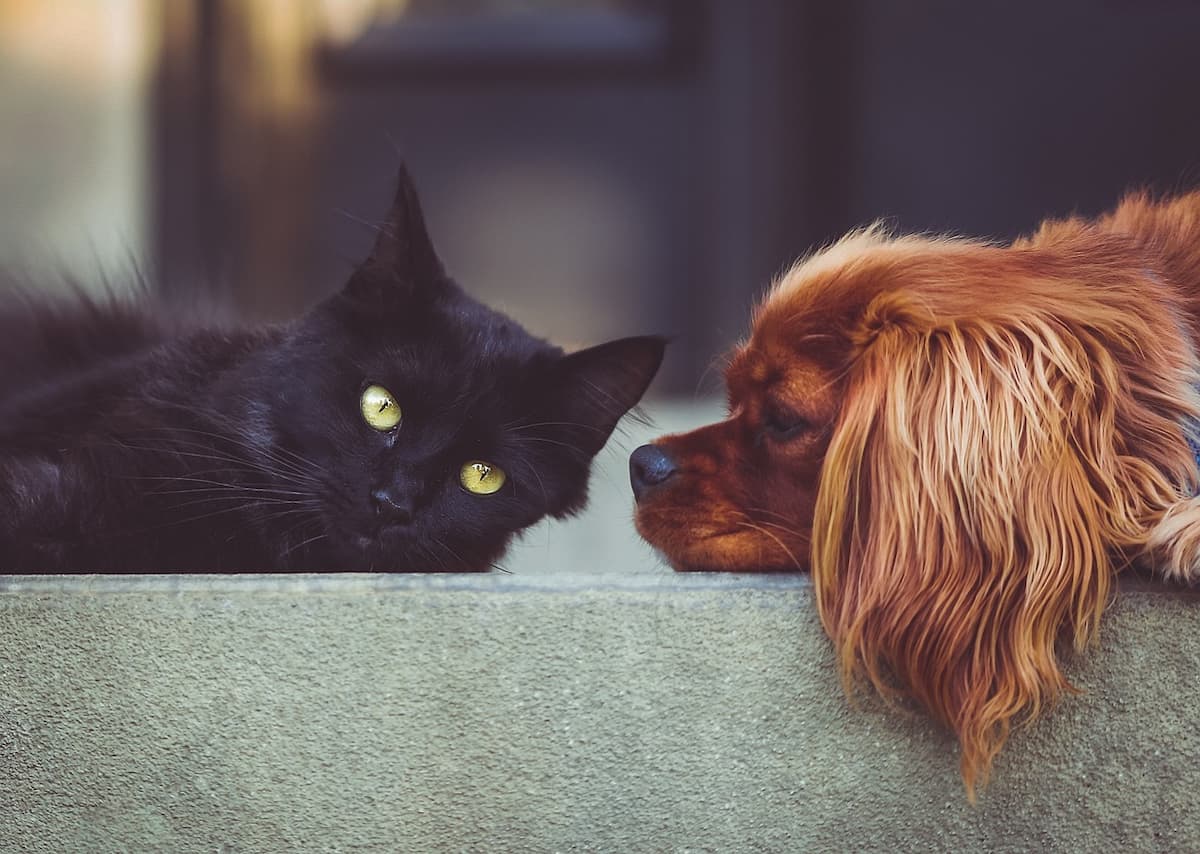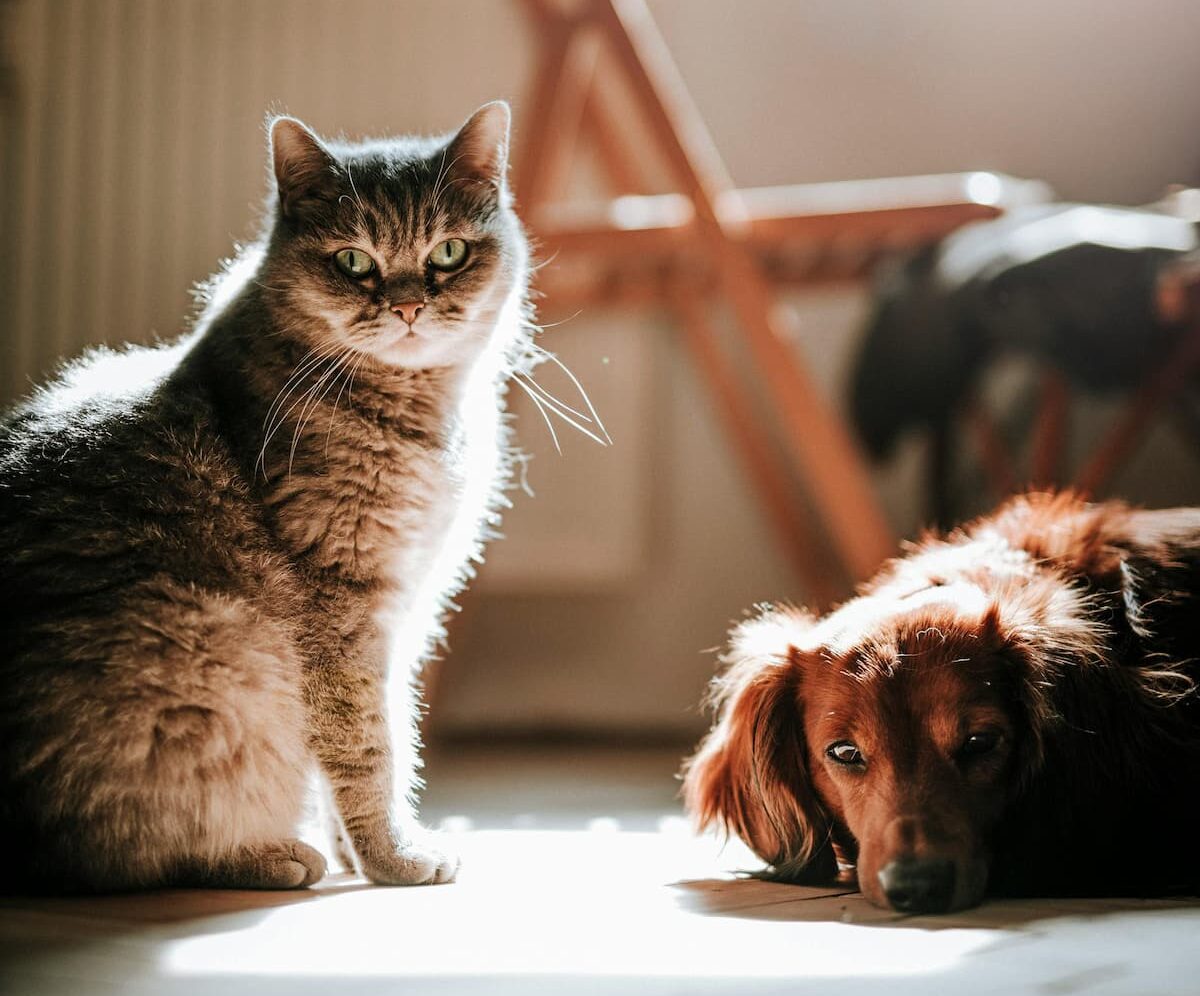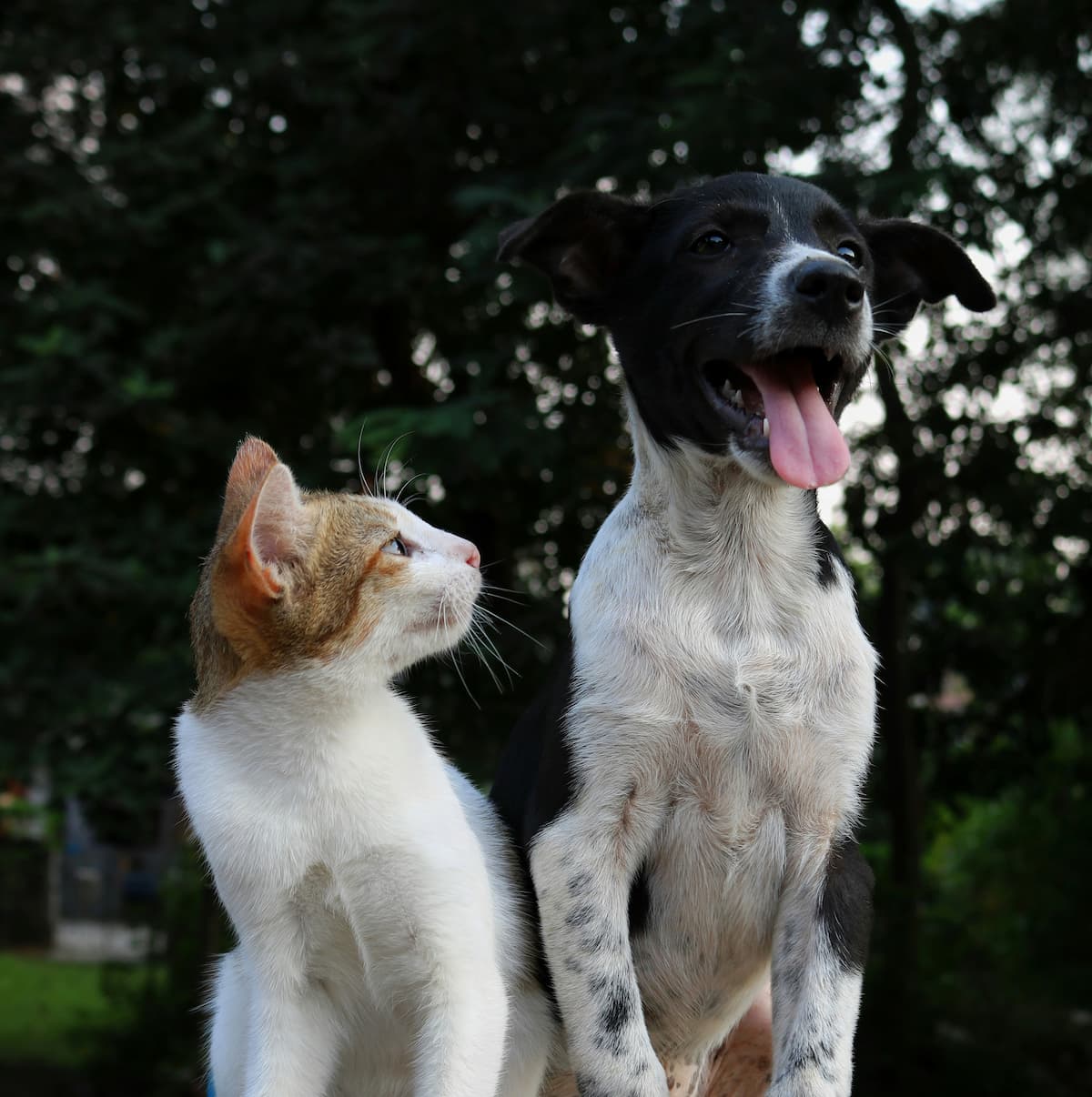Dogs and cats are pretty much eternal enemies.
Indeed, it is safe to say that dogs love humans more than cats.
So why exactly DO dogs have a better relationship with humans than cats?
Read on to find out.
Why Dogs Are More Loving and Attached to Humans Than Cats
Dogs and cats are both popular pets, but many people argue that dogs are more loving and attached to humans than cats are.
While it’s true that cats can show affection in their own unique ways, dogs have a reputation for being incredibly loyal and devoted to their human companions.
So, what makes dogs love humans more than cats? Here are some reasons:
- Evolutionary history: Dogs are descendants of wolves, which were pack animals that relied on cooperation and social bonds for survival.
Over thousands of years, dogs have been selectively bred to have a close bond with humans.
This process involved selecting and breeding the friendliest and most obedient wolves, eventually leading to the creation of the domesticated dog. This evolutionary history has influenced their behavior, making them naturally more attached and loving towards humans, whom they see as an extension of their pack, someone to rely on for companionship and protection in their ever-changing environment.
Cats, on the other hand, were solitary animals in the wild and didn’t rely on social bonds for survival.
This could be why dogs tend to be more affectionate towards humans.
- Domestication: Unlike cats, dogs were specifically bred to work alongside humans, performing various tasks such as hunting, herding, and guarding.
This long history of coexistence and cooperation has fostered a strong bond between dogs and humans.
Dogs have learned to interpret our body language, facial expressions, and vocal cues, making them highly attuned to our emotions.
They have evolved to understand us better than any other animal, making them excellent companions and intuitive therapy animals.
- Emotional attunement: Dogs have an incredible ability to understand and respond to human emotions.
They have evolved alongside humans and have adapted to our patterns of communication and social cues.
Dogs are incredibly perceptive and can pick up on our emotions, body language, and even the subtlest of facial expressions.
This constant interaction and understanding of human behavior helps dogs form a unique bond with their human companions, ultimately leading to their strong preference for humans over other animals.
Cats, on the other hand, are generally more independent and may not respond as emotionally to their owner’s moods.
- Desire for social interaction: Dogs are social creatures that thrive on companionship. They truly enjoy the company of their human family and are constantly seeking interaction and attention.
This innate desire for social connection makes dogs more loving and attached to humans.
While cats can also form strong bonds with their owners, they have a more independent nature and may not always seek out social interaction as eagerly as dogs do.
- Interactions: Another factor that contributes to dogs’ preference for humans is the way we interact with them.
From an early age, we shower them with affection, play, and attentive care.
Through this consistent positive reinforcement, dogs learn to associate humans with happiness and security.
They thrive on the attention and love we provide, forging an emotional bond that is incredibly strong.
Cats, on the other hand, have historically maintained their independence, often receiving less physical and emotional stimulation from their human counterparts.
- Unconditional Love and Affection: Perhaps one of the most endearing qualities of dogs is their capacity to love unconditionally.
They shower their humans with boundless affection, regardless of the circumstances.
This unwavering love and devotion creates a strong sense of emotional attachment.
It is this love that often leads humans to reciprocate, resulting in a deeper bond between dog and owner.
FAQ
Q: Do dogs really love humans more than cats?
A: Well, it’s not fair to say that one animal loves more than the other, as both dogs and cats express their affection for humans in different ways.
However, it’s often perceived that dogs are more openly and eagerly affectionate towards their human companions, while cats maintain a more independent and aloof demeanor.
Q: So, what makes dogs more affectionate?
A: The roots of a dog’s love for humans trace back thousands of years to their wild ancestors.
Once they began to live and work alongside early humans, dogs quickly adapted to our social structures and formed a deep bond with us.
Over centuries of selective breeding, dogs have developed an innate desire to be part of a pack, which includes us humans.
Q: How about cats? Are they inherently less affectionate?
A: Not at all! While cats weren’t domesticated in the same way as dogs, they’ve also developed their own unique bond with humans.
Unlike dogs, cats have maintained more of their wild instincts, resulting in a more solitary nature.
However, this doesn’t mean they don’t love us! Cats simply have a different way of showing their affection, like the famous head bumps, gentle purring, and rubbing against our legs.
Q: Can we say that dogs are more loyal than cats then?
A: Loyalty works in mysterious ways.
Dogs and cats both exhibit loyalty, but their expressions of it may differ.
Dogs tend to be more overtly loyal, showcasing their devotion through constant companionship, wagging tails, and their eagerness to protect their human pack.
On the other hand, cats might not constantly demand our attention, but they do form deep bonds with their owners and demonstrate loyalty in quieter, more subtle ways.
Q: Are there any scientific explanations for this difference in behavior?
A: Absolutely! Scientists have discovered that dogs produce higher levels of oxytocin, often referred to as the “love hormone,” when interacting with humans.
This hormone promotes bonding and creates a sense of attachment, both for the dog and its human companion.
However, we mustn’t ignore the fact that cats produce oxytocin as well, just perhaps in different quantities.
Q: Are there any benefits to having a more affectionate pet like a dog?
A: Certainly! Dogs’ innate need for companionship often translates into increased physical activity.
Their boundless energy motivates us to engage in daily walks, runs, and play sessions.
These activities not only benefit our physical health but also contribute to improved mental wellbeing.
Plus, the unwavering love and devotion of a dog can provide immense emotional support, reducing stress and loneliness.
Q: Can cat lovers bond with their feline friends in a similar way?
A: Absolutely! While cats may not express their affection as conspicuously as dogs, they can provide unique and irreplaceable companionship.
Many cat owners develop deep, soulful connections with their feline friends that can offer immeasurable comfort and joy.
It’s important to remember that every animal, regardless of species, has its own way of showing love.
Conclusion
While we may never come to a definitive conclusion as to why dogs like humans more than cats, it’s clear that the unique bond formed between dogs and humans is a result of a variety of factors, from biological to social aspects.
Throughout history, dogs have faithfully stood by our side, offering companionship, protection, and loyalty.
Their domestication, coupled with their pack mentality, has ingrained in them a deep need to connect with us and become a part of our lives.
They thrive on our presence and eagerly seek our affection and attention.
On the other paw, our feline friends have a more mysterious allure.
Independent by nature and known for their undeniably charming aloofness, cats seem to have different ways of expressing their love for us.
Yet, these moments of their affection, however fleeting, can be just as rewarding and heartwarming.
While dogs often wear their hearts on their paws and shower us with abundant displays of adoration, cats may choose to show their affection in more subtle ways, like a soothing purr or a gentle nudge.
Understanding and accepting these distinct expressions of love is a testament to the diverse beauty of the animal kingdom.
Ultimately, what truly matters is not the level of love a dog or a cat may appear to have for us, but the joy and fulfillment they bring to our lives.
Whether you find comfort in the unwavering loyalty of a dog or seek solace in the enigmatic companionship of a cat, these marvelous creatures remind us of our capacity to nurture and care for other beings.












